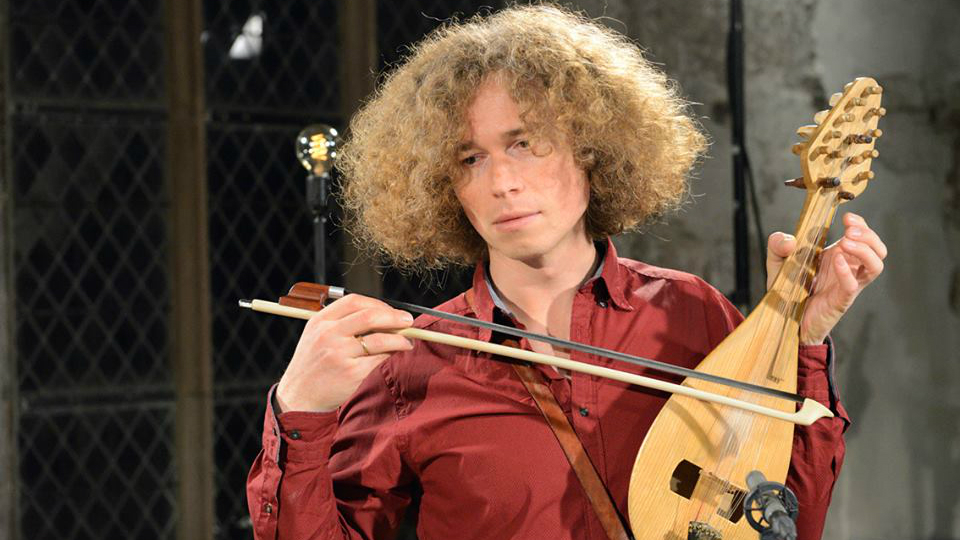
Gadulka
- Joined Dec 2019
- Published Books 1
Copyright © 2019
The Gadulka is a musical instrument from the string- like group
It is characteristic of Bulgarian folk music. The sound is made using a bow. There are two types of Gadulka. The great popularity of the Gadulka is due to its use as a solo and ensemble instrument, as well as to accompany folk songs. The gadulka is made of a whole piece of wood and have a pear-shaped shape. All its parts are carved and then the hull is carved. The tone of the gander is obtained by moving the bow on the strings. it is held upright, which dramatically changes the way the sound is produced. Unlike the violin, here the transition from one string to another takes place as the whole swing turns around its longitudinal axis. On the other hand, the bar is missing and the tones are produced by lightly touching the tip of the fingers to the string!!!
Facts about the gadulka
In some parts of Bulgaria, the gadulka is called kopanka (Dobrudzha), Giola (Haskovo), KAMEN or KAMENCHE (Western Bulgaria, Upper Thrace). The term “pebble” and similar instrument is used in Bulgaria, Greece, Turkey, Georgia, Azerbaijan and Iran. Kemenche is a Persian word and means “little bow” of keman – bow, kemandjeh – bow. There are only two areas in Turkey where this tool is known:the area of Istanbul, where it is called Rum Kemençe (Byzantine kemenche) and the Caucasus region. Of the bow tools in Ottoman Turkey, the most commonly used is the Arabian Rabab, similar to the pebble, which is, however, completely unknown in Bulgaria. The Ottoman Turks, therefore, could not bring and enforce this instrument in Bulgaria. And as we will see later, this instrument appeared in Constantinople in the 9th century, where it was brought by the ancient Bulgarians!
The terms used to designate the individual parts of the gadulka are ancient and in many cases original Bulgarian. The body or body of the gander plays the important role of a sound resonator, which amplifies the volume and changes its timbre. This body is called the ancient words KORUBA, KUTEL, KORITO, KOPANKA. There are reels in the head of the string, around which the ends of the strings are wound to stretch. These reels are referred to as the WORKS, KEYS, CHIVES.According to P. Dobrev, the word KLICHKA occurs among the Pamir peoples and is a heritage of the Proto-Bulgarians. The word KEY is a phonetic variant of the Old Bulgarian and Proto-Bulgarian words “crick” – blacksmith, because initially the keys were made of skillful blacksmiths. The word CHIVIA means “wooden nail” and is not found in the peoples of Bulgaria. The other end of the strings is fixed to a plate called the RIBB. The word is also in Russian, but it is considered to be an ancient Church Slavonic (understand Old Bulgarian) word.
The bow of the gadulka is called CHILE, and its string, which is most often made of horsehair hair, is PIRGI. The semantics of the word CHILE are easily found in Iranian languages. For example, Ossetian sqil, Yagnob chilik, Kurdish çilak mean “twisted”. Indeed, the bow of the gadfly is a curved rod, the two ends of which are connected to each other by a string, which, when rubbed back and forth on the main string, produces sound.In the Bulgarian language, there is another use case of the word chile – in domestic crafts, the bow on which the finished yarn is wound is called chile [Kolyu Sevov. The construction site. Novel. Sofia, 1982]. Another similar word in Bulgarian is SKULI – curved facial bones that form the eyelids, which is also found in Russian. The connection between CHILE and SCULI with the Ossetian form sqil – “curved” is obvious. In Persian, tsarê means “bow arrow”, a word similar to “chile” – bow.

Video:
Music:
Published: Dec 17, 2019
Latest Revision: Dec 17, 2019
Ourboox Unique Identifier: OB-701461
Copyright © 2019








